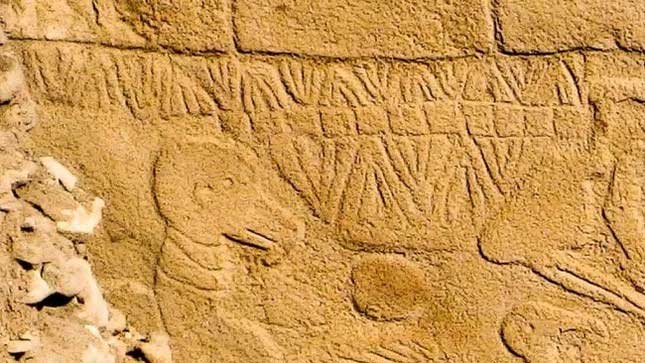A recent study suggests that carvings on a large stone pillar in Turkey, dating back nearly 13,000 years, may represent the world’s oldest solar and lunar calendar. This calendar could have been engraved to mark a catastrophic comet impact.
The 13,000-year-old carvings discovered in Turkey track the movements of the sun, moon, and constellations, making it the earliest known lunar-solar calendar.

Each V-shaped carving symbolizes a day, while the bird shape represents the solstice. (Photo: Martin Sweatman)
According to research published in the journal Time and Mind, archaeologists discovered these markings at Göbekli Tepe, an archaeological site in southern Turkey famous for its intricately carved temple structures.
The newly studied pillar contains 365 V-shaped symbols. Researchers believe that each “V” represents a day, with the entire calendar comprising “12 lunar months plus an additional 11 days.”
In addition to the “V” symbols, researchers analyzed a carving of a “bird-like creature” also shaped like a V around its neck. They claim that this depiction may represent “the constellation of the solstice at the time it was carved.”
The drawings, likely created around 10,850 BCE, serve as a means to record a comet impact that occurred during that period. They indicate that these early inhabitants may have documented their observations of the sun, moon, and constellations in the form of a solar calendar.
Researchers suggest that the impact of the comet could have triggered an ice age, sufficient to cause cultural changes at Göbekli Tepe and potentially leading to the formation of a new cult or religion.
“It seems that the residents of Göbekli Tepe were very skilled sky watchers, which is understandable given that their world was devastated by a comet impact,” said study author Martin Sweatman, an engineer at the University of Edinburgh, UK. “This event may have propelled civilization by initiating a new religion and promoting agricultural development in response to the frigid climate. Perhaps their efforts to record what they observed were the first steps towards the development of writing millennia later.”
These engravings are similar to those found at another archaeological site in the Urfa region of Turkey.




















































